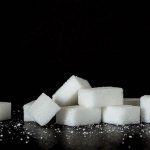
If governments must apply a sugar tax, how could they make it more effective in reducing sugar consumption?
The latest research on the impact of taxing foods has been investigated in a study on BMJ Open. It would appear a 10% tax on sweet snacks could and should produce a similar reduction in consumer demand as the tax on sugar-sweetened beverages (SSBs).
A number of research groups were involved: the London School of Hygiene & Tropical Medicine, The University of Cambridge and the University of Oxford. The teams examined household expenditure on food and drink items in 13 different groups from a nationally representative sample of around 32,000 UK homes. They looked at purchasing of food items overall. They then compared incomes in these households which were bracketed into low-income, middle-income, and high- income groupings. The data covered a two year period in 2012 and 2013. The data provided complete details for each sales transaction as well as social and demographic information for each household. To estimate the change in purchasing, the researchers applied a specialized tool for studying consumer demand.
Researchers found that adding 10 per cent to the price of chocolate, cakes, cookies and other confectionery appears to reduce purchases of these products by around 7 per cent. That is a similar outcome to when sugar sweetened beverages were taxed.
Why? Previous research has shown that a 10 per cent increase in price reduces purchases by 6 to 8 per cent. They also discovered that increasing the price of sweet snacks may have wider effects on purchasing patterns. For example, increasing the price of chocolate snacks was estimated to bring about significant reductions in purchases across most food categories, while a price increase on biscuits showed a potential reduction in the demand for cakes (2.3%) as well as chocolate and confectionery (1.7%).
The potential effects of price increases were greatest in the low-income group. Increasing the price of cookies was linked to a reduction in the purchase of chocolate and confectionery for the low-income group (3% if price increases by 10%). No such reductions for the high-income group were observed. Increasing the price of chocolate and confectionery was estimated to have a similar effect across all income groups.
One of the issues with this piece of research was the absence of data on purchases of food and drink bought and consumed outside of the home as in restaurants which is likely to be higher amongst higher income earners.
Lead author Professor Richard Smith from the London School of Hygiene & Tropical Medicine is quoted in his press release:
“We know that increasing the price of sugar-sweetened beverages is likely to generate a small, but significant, reduction in their purchase. However, there has been little research on the impact that a similar price increase on other sweet foods such as chocolate, confectionery, cakes and biscuits could have on the purchase of sugar. This research suggests that taxing these sweet snacks could bring greater health gains and warrants detailed consideration.”
Co-author Susan Jebb, Professor from the University of Oxford stated:-
“It’s impossible to study the direct effects of a tax on snack food on consumer behaviour until such policies are introduced, but these estimates show the likely impact of changes in the price.”
“This research suggests that extending fiscal policies such as the sugar tax to include sweet snacks could be an important boost to public health, by reducing purchasing and hence consumption of these foods, particularly in low-income households.”
Reference
Richard D Smith, Laura Cornelsen, Diana Quirmbach, Susan A Jebb, Theresa M Marteau. Are sweet snacks more sensitive to price increases than sugar-sweetened beverages: analysis of British food purchase data. BMJ Open, 2018; 8 (4): e019788 DOI: 10.1136/bmjopen-2017-019788 http://bmjopen.bmj.com/content/8/4/e019788

Leave a Reply